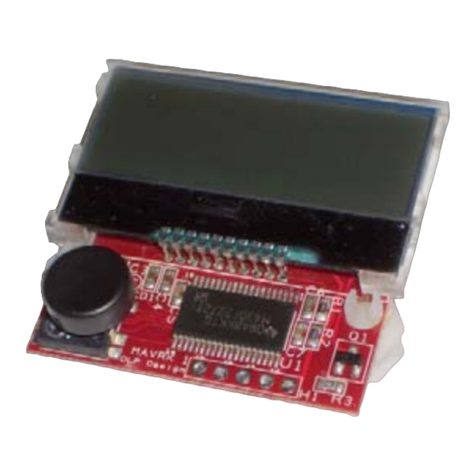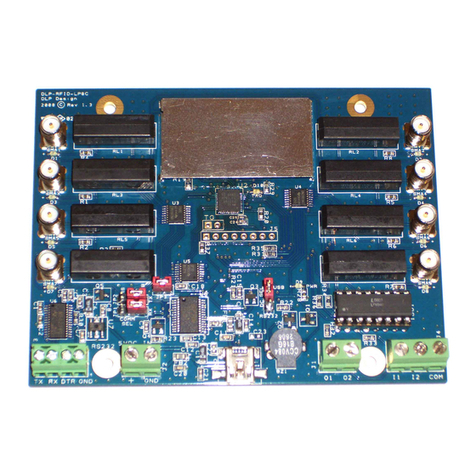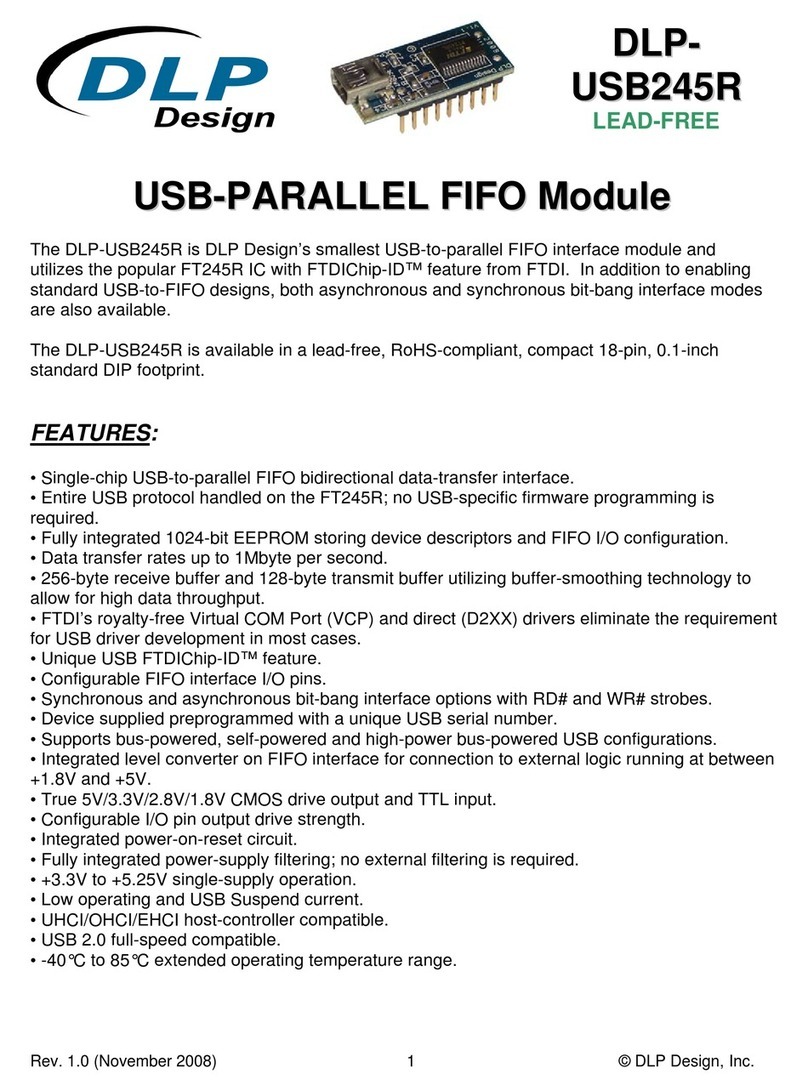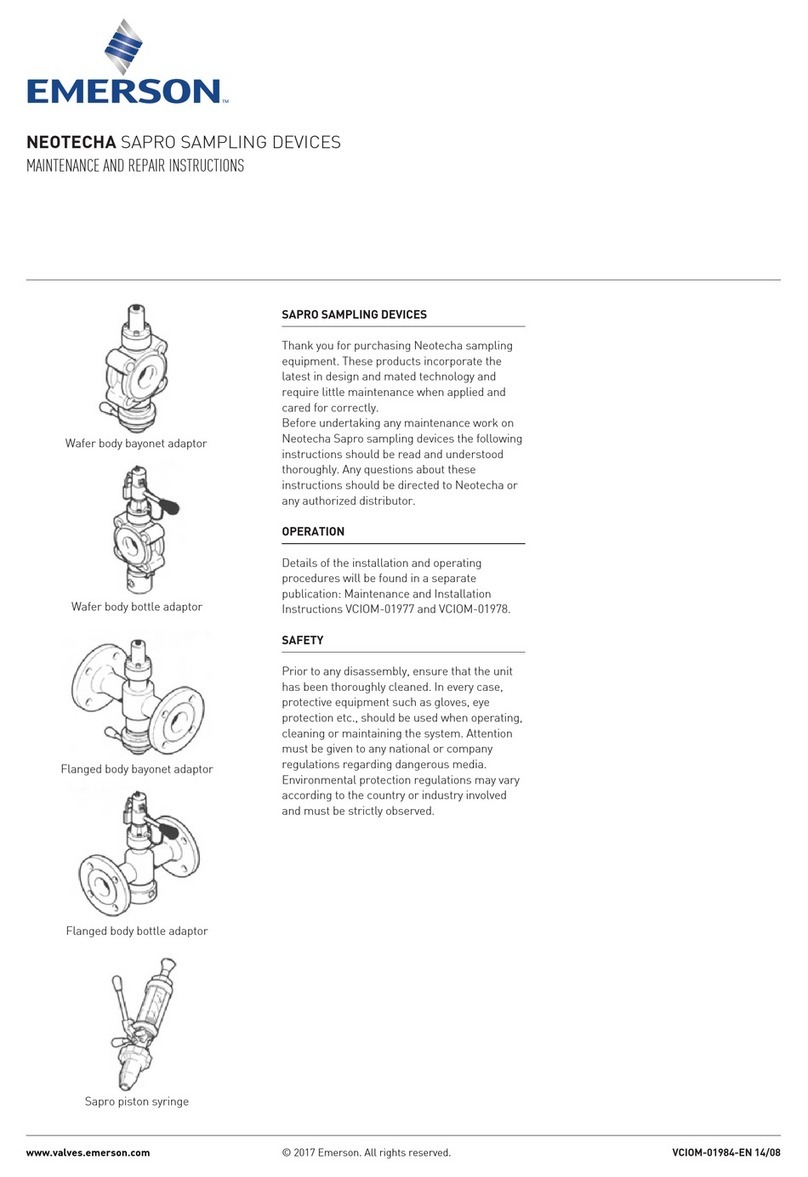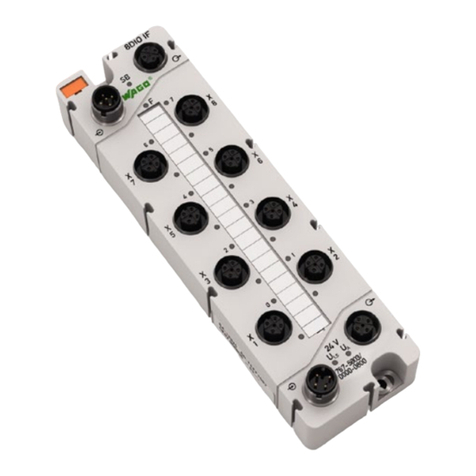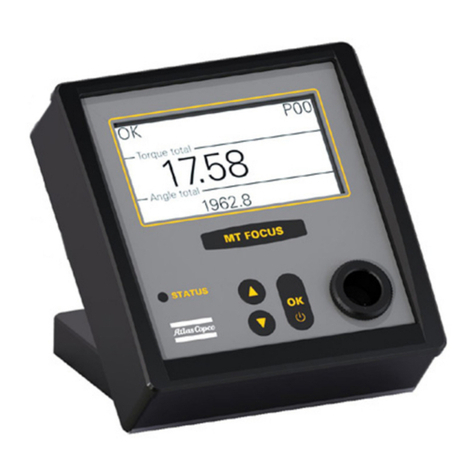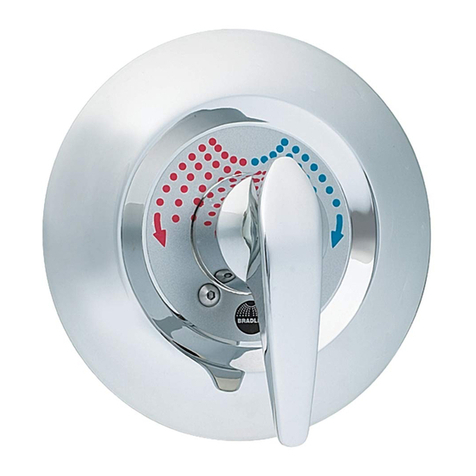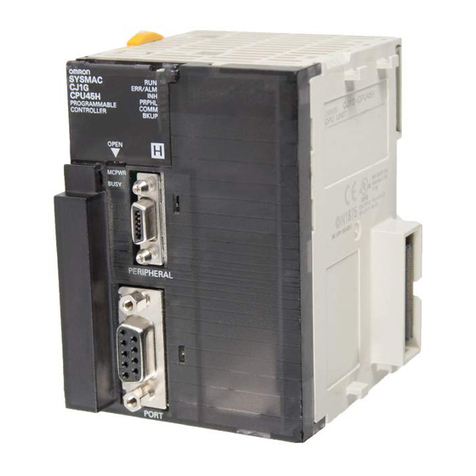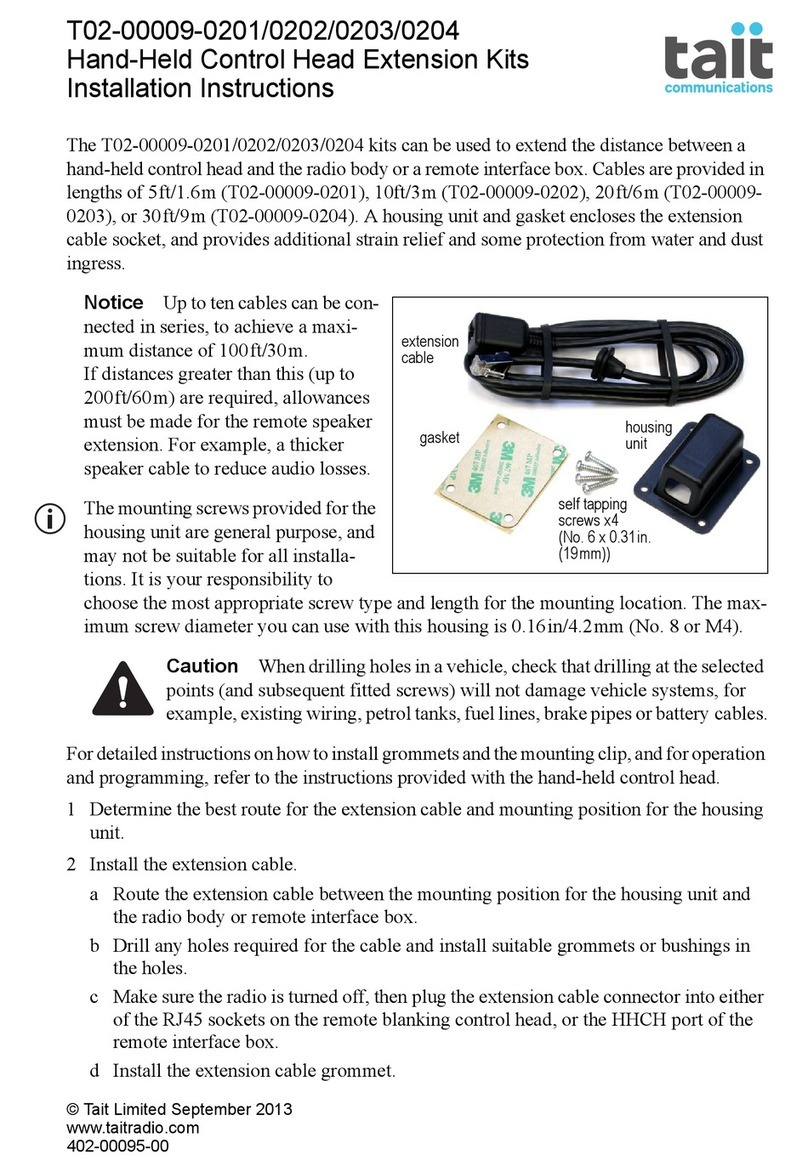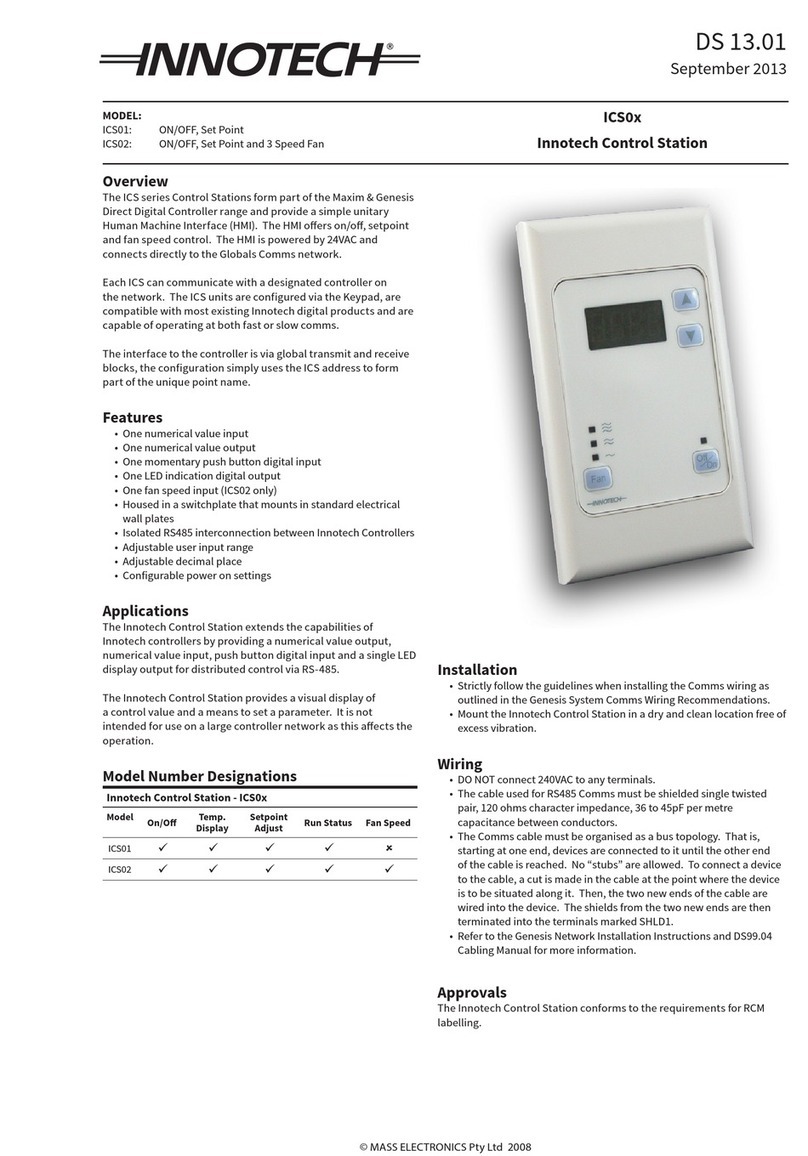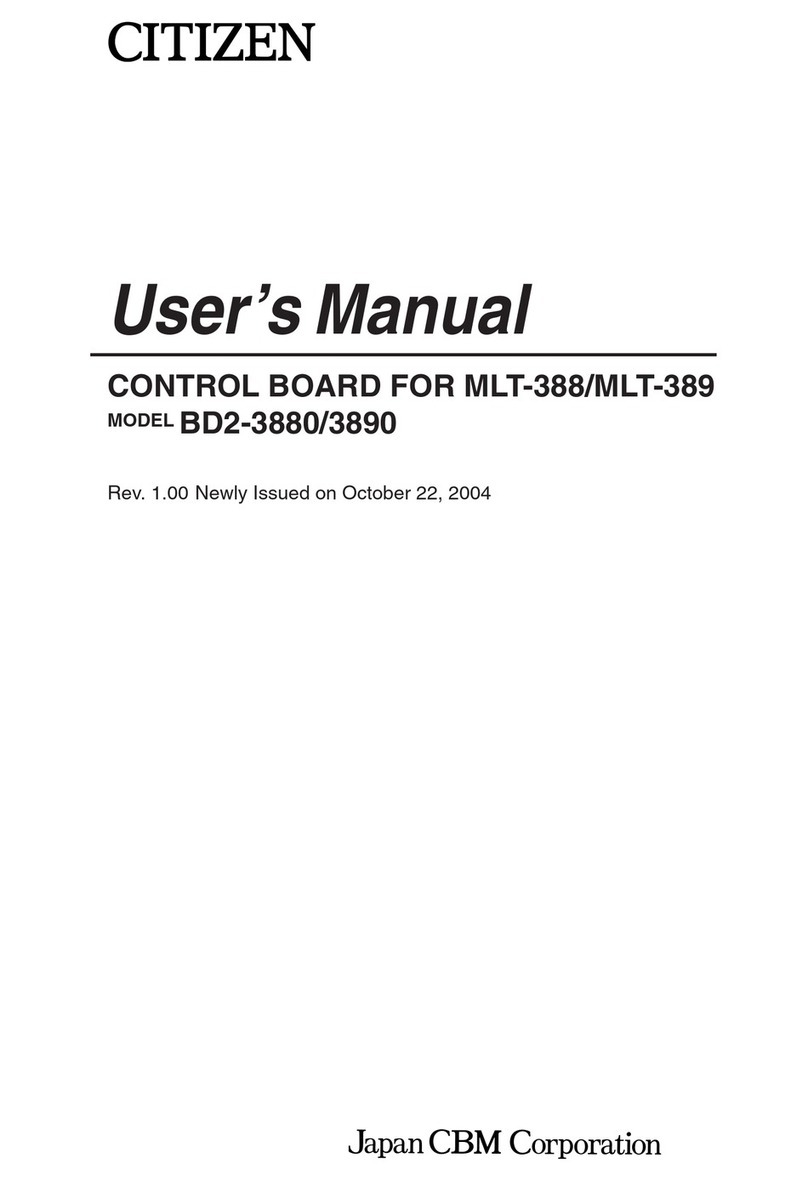DLP Design DLP-RFS1280 User manual

Rev 1.7 (April 2018) 1 ¤ DLP Design, Inc.
D
DL
LP
P-
-R
RF
FS
S1
12
28
80
0
2
2.
.4
4G
GH
Hz
z
D
DA
AT
TA
A
R
RA
AD
DI
IO
O
** PRELIMINARY DOCUMENT-SUBJECT TO CHANGE **
FEATURES:
x 2.40GHz-2.48GHz Operation
x +11.5dBm Output Power
x 4+ Mile Range (Line of Sight)
x U.FL Antenna Connector for External Antenna
x LORA, GFSK and FLRC Modulation Modes
x On-Board Chip Antenna
x FCC/IC/RED/MIC (Japan) Modular Approvals in Place
x Single 3.3-Volt Power Supply
x Development Kit Available
x Demonstration Source Code Available for Use with the NUCLEO-L073RZ microcontroller
development board (purchased separately)
APPLICATION AREAS:
x Real-Time Security
x Body-Worn Medical Telemetry
x Battery-Powered Home Automation
x Electric/Water/Gas Automated Meter Reading
x Industrial Monitoring and Control
x Active RFID
x Long Range, Battery-Powered, Multi-Hop Sensor Networks
1.0 INTRODUCTION
The DLP-RFS1280 is a low-cost module for transmitting and receiving digital data via radio frequency.
All of the DLP-RFS1280’s electronics (including an antenna) reside on a single PCB, and all
operational power is derived from a single supply voltage.
The transceiver design consists of a Semtech SX1280 low-power, integrated UHF transceiver and an
antenna switch for selecting between the on-board chip antenna and an optional external antenna.
The hardware is designed for maximum range and optimal battery life.

Rev 1.7 (April 2018) 2 ¤ DLP Design, Inc.
2.0 ELECTRICAL SPECIFICATIONS
Supply Voltage 1.8-3.7V
Frequency Range 2.402-2.48GHz
Output Power 14mW (+11.5dBm) Maximum (Conducted)
TX/RX Range Greater than 5 Miles (Antenna-Type Dependent)
Protocol Multiple
Communications Interface SPI
Operational Power – Transmit 24mA
Operational Power – Receive 4.8mA-5.6mA Depending Upon the Operating Mode
Operational Power – Sleep 8uA (Deepest Sleep Mode)
Antenna Connector u.fl*
Operating Temperature 0-70°C
*Please see the Antenna Section for important regulatory details.
3.0 IO PINS
IO Pin Definitions
1 GROUND
2 NRESET
3 BUSY
4 DIO1
5 DIO2
6 DIO3
7 MISO_TX
8 GROUND
9 3.3V POWER SUPPLY
10 MOSI_RX
11 SCK_RTSN
12 NSS_CTS
13 ANTSEL
14 GROUND

Rev 1.7 (April 2018) 3 ¤ DLP Design, Inc.
4.0 MECHANICAL
4.1 MECHANICAL DRAWING - Overall Dimensions: 0.8 x 0.92 x 0.135 In.
Note: thou = mils or 0.001 inches.
4.2 MOUNTING OPTIONS
The DLP-RFS1280 module can be either surface mounted to a printed circuit board or connected
using 0.1-inch spaced headers (0.025 sq.-inch posts).

Rev 1.7 (April 2018) 4 ¤ DLP Design, Inc.
5.0 APPLICATION DEVELOPMENT
Demonstration source code written in the C programming language is available for free download
upon purchase of the DLP-RFS1280 or DLP-RFS1280ACT demonstration platform. The code was
developed using MBED and Keil uVision for the STMicrocontroller Nucleo microcontroller
development module.
Source code for the demonstration software has been developed for the STM32L073RZ-based
Nucleo board. Compiling the L073 source code may require the user to purchase the Keil compiler.
Additional information on the operation of the Semtech SX1280 transceiver IC is available in the
datasheet for the SX1280.
6.0 DEMONSTRATION HARDWARE - EDK
This section describes how to operate the DLP-RFS1280ACT demonstration hardware (purchased
separately). The DLP-RFS1280ACT includes a DLP-RFS1280 transceiver module that allows the
user to easily verify normal operation of the transceiver and assists in helping them become familiar
with the operational firmware.

Rev 1.7 (April 2018) 5 ¤ DLP Design, Inc.
Note: Flow diagrams for the demonstration code can be found at the end of this datasheet. Source
code for the demonstration EDK is made available upon purchase of the DLP-RFS1280 or
DLP-RFS1280ACT.
Power for this test platform can be provided by a phone charger battery (purchased separately) or a
PC USB port using the included USB cable. The USB connector is a 5-pin, mini-USB connector.
For normal mode, press the RESET button. The system will be in Receive Mode waiting for packets
to arrive. After each mode listed below, press RESET to return to idle state before proceeding to the
next test mode.
6.1 TEST MODE: For Carrier Wave (CW) Mode - No Modulation
6.1.1 Press Button 1 until LORA Mode is selected:
6.1.2 Press and hold Button 1. While holding Button 1, press and release RESET. Continue to
hold Button 1 until you hear a beep. Release Button 1, and the system will be transmitting at 2.4GHz
on the internal chip antenna with no modulation.
- Be sure to turn the volume up (blue knob next to the speaker) if you cannot hear the beep.
- You can change to the external antenna by pressing Button 2 (ANT SEL). The display will show
either a “C” for chip antenna or a “W” for whip antenna.
- You can change the carrier frequency to 2.44GHz by pressing Button 5 (LMH). Repeatedly pressing
the LMH button will cycle through low (2.41GHz), medium (2.44GHz) and high (2.48GHz) carrier
frequencies.
6.2 TEST MODE: For CW Mode - With Modulation - LORA Mode
6.2.1 Press Button 1 until LORA Mode is selected:
6.2.2 Press and hold Button 3. While holding Button 3, press and release RESET. Continue to hold
Button 3 until you hear a beep. Release Button 3 and the system will be transmitting at 2.4GHz on
the internal chip antenna with LORA modulation.

Rev 1.7 (April 2018) 6 ¤ DLP Design, Inc.
6.3 TEST MODE: For CW Mode - With Modulation - FLRC Mode
6.3.1 Press Button 1 until FLRC Mode is selected:
6.3.2 Press and hold Button 3. While holding Button 3, press and release RESET. Continue to hold
Button 3 until you hear a beep. Release Button 3 and the system will be transmitting at 2.4GHz on
the internal chip antenna with FLRC modulation.
6.4 TEST MODE: For CW mode - With Modulation - GFSK Mode
6.4.1 Press Button 1 until GFSK mode is selected:
6.4.2 Press and hold Button 3. While holding Button 3, press and release RESET. Continue to hold
Button 3 until you hear a beep. Release Button 3 and the system will be transmitting at 2.4GHz on
the internal chip antenna with GFSK modulation.
6.5 PAIRING
Each Nucleo board has a unique serial number that is created by combining wafer data stored in
silicon within the STM32 microcontroller. This serial number is generated after each reset, and is then
presented on the LCD display of the DLP-RFS1280ACT. Pairing is the process of sending that
unique serial number to another DLP-RFS1280ACT so that the two devices are linked for all product
demonstrations that require two transceivers.
6.5.1 Press and hold Button 4. While holding Button 4, press and release RESET. Continue to hold
Button 4 until you hear a beep. Release Button 4 and the LCD will display “wait” to indicate that the
paired device’s ID data is forthcoming.

Rev 1.7 (April 2018) 7 ¤ DLP Design, Inc.
6.5.2 Press the RESET button on the transceiver to be paired. Immediately after the RESET button
is released, the DLP-RFS1280ACT will transmit a packet containing its ID. This ID is received by the
transceiver that is waiting. The ID is presented on the LCD and also stored to permanent memory so
that it automatically loads after the next reset or power cycle. (This pairing process can be repeated if
different transceivers need to be paired.)
6.6 RANGE TESTING
6.6.1 Press Button 1 on each transceiver until LORA Mode is shown on the LCD display of both
platforms.
6.6.2 On Transceiver 1, press and hold Button 5. While holding Button 5, press and release
RESET. Continue to hold Button 5 until you hear a beep, then release Button 5. Press and release
RESET on Transceiver 2. At this point Transceiver 1 will be transmitting packets to Transceiver 2,
which will beep with each received packet.
- Be sure to turn the volume up (blue knob next to the speaker) if you cannot hear the beep.
- A Range Test can be performed using any of three modulation modes: LORA, GFSK or FLRC.
6.7 PUSH TO TALK (WALKIE-TALKIE MODE)
The Push To Talk function is a rudimentary demonstration of packetizing and transmitting audio in
LORA Mode using Spreading Factor 6. This demonstration is not intended to provide high audio
quality.
6.7.1 Press Button 1 on each transceiver until LORA mode is shown on the LCD display of both
platforms.
6.7.2 Press Button 4 (labeled “PTT”), and speak into the microphone. Maintain a distance of about
12 inches between your mouth and the microphone to avoid overdriving the microphone pre-amp
circuit. Acquired audio will be reproduced on the paired transceiver. Make sure the volume control
(blue knob) is turned up.
- You may have to reset both transceivers to initiate this demonstration.
6.8 RANGING
6.8.1 Press Button 1 on each transceiver until LORA mode is shown on the LCD display of both
platforms.
6.8.2 On Transceiver 1, press and hold Button 6. While holding Button 6, press and release RESET.
Continue to hold Button 6 until you hear a beep, then release Button 6. At this point Transceiver 1
will be performing the Ranging function with Transceiver 2, displaying the range in both feet and
meters. Note that the most accurate results are obtained by using the whip antenna.

Rev 1.7 (April 2018) 8 ¤ DLP Design, Inc.
7.0 REGULATORY AGENCY CONSIDERATIONS
7.1 AGENCY IDENTIFICATION NUMBERS
This device complies with Part 15 of the FCC Rules.
Compliance with the appropriate regulatory agencies is essential in the deployment of all transceiver
devices. DLP Design has obtained modular approval for this RF product. As such, an OEM need
only meet a few basic requirements in order to utilize their end product under this approval.
Corresponding agency identification numbers are listed below:
PART NUMBER US / FCC CANADA / IC
DLP-RFS1280 SX9RFS2 5675A-RFS2
7.2 EXTERNAL ANTENNAS
The DLP-RFS1280 is preapproved for use with both its on-board chip antenna and an external
antenna (Part No. ANT-2.4-PML-UFL made by Antenna Factor / Linx). Connection to the external
antenna is made via a u.fl connector.
7.3 FCC/IC REQUIREMENTS FOR MODULAR APPROVAL
Any modifications made to the DLP-RFS1280’s printed circuit board, on-board antenna or
pre-approved external antenna could void the user’s authority to operate this equipment. Other
external antennas can be used with the DLP-RFS1280 module so long as the maximum legal radiated
power limit is not exceeded.
7.4 WARNINGS
Operation is subject to the following two conditions: (1) This device may not cause harmful
interference and (2) this device must accept any interference received, including interference that may
cause undesirable operation.
This device is intended for use under the following conditions:
1. The transmitter module may not be co-located with any other transmitter or antenna; and,
2. The module has been approved using the FCC’s “unlicensed modular transmitter approval”
method.
As long as these two conditions are met, further transmitter testing will not be required. However, the
OEM integrator is still responsible for testing their end product for any additional compliance
measures necessitated by the installation of this module (i.e. digital device emissions, PC peripheral
requirements, etc.).
Le présent appareil est conforme aux CNR d'Industrie Canada applicables aux appareils radio

Rev 1.7 (April 2018) 9 ¤ DLP Design, Inc.
exempts de licence. L'exploitation est autorisée aux deux conditions suivantes : (1) l'appareil ne doit
pas produire de brouillage, et (2) l'utilisateur de l'appareil doit accepter tout brouillage
radioélectrique subi, même si le brouillage est susceptible d'en compromettre le fonctionnement.
Note: In the event that these conditions cannot be met (i.e. co-location with another transmitter), then
the FCC authorization is no longer valid, and the corresponding FCC ID may not be used on the final
product. Under these circumstances, the OEM integrator will be responsible for re-evaluating the end
product (including the transmitter) and obtaining a separate FCC authorization.
7.5 OEM PRODUCT LABELING
The end product containing the DLP-RFS1280 must be labeled in a visible area with the following
text:
“Contains FCC ID: SX9RFS2”
L’étiquette d’homologation d’un module d’Innovation, Sciences et Développement économique
Canada devra être posée sur le produit hôte à un endroit bien en vue, en tout temps. En l’absence
d’étiquette, le produit hôte doit porter une étiquette sur laquelle figure le numéro d’homologation du
module d’Innovation, Sciences et Développement économique Canada, précédé du mot « contient »,
ou d’une formulation similaire allant dans le même sens et qui va comme suit:
“Contient IC: 5675A-RFS2 est le numéro d’homologation du module.”
7.6 RF EXPOSURE
This equipment complies with FCC and IC RSS-102 radiation-exposure limits set forth for an
uncontrolled environment. This equipment should be installed and operated with a minimum distance
of 20cm between the radiator and a human body. This transmitter must not be co-located or
operating in conjunction with any other antenna or transmitter.
Cet équipement est conforme aux limites d'exposition aux radiations fac et IC CNR-102 établies pour
un environnement non contrôlé. Cet équipement doit être installé et utilisé avec une distance
minimale de 20 cm entre le radiateur et votre corps. Cet émetteur ne doit pas être co-implanté ou
fonctionner en conjonction avec toute autre antenne ou transmetteur.
7.7 ADDITIONAL INFORMATION FOR OEM INTEGRATORS
The end user should not be provided with any instructions on how to remove or install the
DLP-RFS1280. This device has been certified to operate with the antenna models listed below:
x On-board Chip Antenna
x Antenna Factor / Linx ANT-2.4-PML-UFL

Rev 1.7 (April 2018) 10 ¤ DLP Design, Inc.
8.0 DISCLAMER
© 2017 DLP Design, Inc. All rights reserved.
Neither the whole nor any part of the information contained herein nor the product described in this
datasheet may be adapted or reproduced in any material or electronic form without the prior written
consent of the copyright holder.
This product and its documentation are supplied on an as-is basis, and no warranty as to their
suitability for any particular purpose is either made or implied. DLP Design will not accept any claim
for damages whatsoever arising as a result of the use or failure of this product. Your statutory rights
are not affected.
This product or any variant of it is not intended for use in any medical appliance, device or system in
which the failure of the product might reasonably be expected to result in personal injury.
This document provides preliminary information that may be subject to change without notice.
9.0 CONTACT INFORMATION
DLP Design, Inc.
1605 Roma Lane
Allen, TX 75013
Phone: 469-964-8027
Fax: 415-901-4859
Email: [email protected]
Internet: http://www.dlpdesign.com

Rev 1.7 (April 2018) 11 ¤ DLP Design, Inc.
DLP-RFS1280ACT Demonstration
Platform - Main Loop
START (Reset or
Power Up)
Setup Serial Comm
Through Nucleo to
Host Via USB
Read MyID From
STM32 and Init
EEPROM
Init SPI Port and
SX1280 Registers
Send MyID To Other
RFS1280ACT On
Standard Channel
Set Packet Type and
Parameters to Values
Last Used
Switch 4
Pressed
?
Enter Receive Mode on
Standard Channel and
Wait for ID Packet for
Pairing
Enter Continuous CW
Transmit Mode - Reset
Required to Exit
Switch 1
Pressed
?
Switch 3
Pressed
?
Enter Continuous CW
Transmit With
Modulation - Reset
Required to Exit
Switch 5
Pressed
?
Switch 6
Pressed
?
Enter Ping Test Mode -
One Ping Per Second -
Reset Required to Exit
Enter Ranging Mode -
Reset Required to Exit
4
1
5
2
6
3
CW
LORA
FSK
FLRC
ANT SEL
MOD
PTT
RX ID PING
TEST
LMH
SF
RANGING
7 BUTTONS
RESET
Enter Receive Mode
Ping
Packet
Received
?
Beep Once If MyID was
Received
Audio
Packet
Received
?
Play Audio Over
Speaker if MyID was
Received
Ranging
Packet Received
?
If Correct 32-Bit ID
was Received, Enter
Ranging Slave Mode
Switch X
Pressed
?
SW1: Toggle Packet Mode
SW2: Toggle Int/Ext Antenna
SW3: Adjust Spreading Factor
SW4: Digitize and Xmit Audio
SW5: Toggle Carrier
Frequency Low/Med/High
Y
Y
Y
Y
Y
Y
Y
Y
Y
Main Loop
(See Ranging Diagram)
(Pairing)
(Pairing)
N
N
N
N
N
N
N
N
N

Rev 1.7 (April 2018) 12 ¤ DLP Design, Inc.
DLP-RFS1280ACT Demonstration Platform - Ranging
Halt Timer - Exit to Main Loop
All 40
Channels
Processed
?
Slave
(Function Called from Main Loop)
Master
Read RSSI and Frequency
Error from LORA Packet Just
Received From Master
Transmit RSSI and Frequency
Error Back to Master SF12
Set Timer to Periodically
Change TX Carrier Frequency
to Next in List - 40 Channels
Total
Setup For LORA Mode SF12 with
Paired Transceiver - Send Packet
Requesting Ranging Function
Select Ranging Interrupts and
Load RXTX Delay-Offset
Values to Registers
Enter Receive Mode Waiting for
Ranging Packet - Replies Sent
Automatically
Set Packet Type and
Parameters For Ranging SF6/
SF10 - Load the Shared 32-Bit
Ranging Address
(Mode Entered from Reset)
Receive Packet With RSSI and
Frequency-Error Data From Slave
Set Packet Type and Parameters
for Ranging Mode SF6/SF10
Depending on RSSI - Load the
Shared 32-Bit Ranging Address
Select Ranging Interrupts and Load
RXTX Delay-Offset Values to
Registers
Set Timer to Periodically Change
TX Carrier Frequency to Next in
List - 40 Channels Total
Enter Transmit Mode Waiting for
Ranging Packet Replies
All 40
Channels
Processed
?
Transmit
Ranging Packet
- Wait for
Interrupt - Read
and Accumulate
Range Data
Halt Timer -
Calculate
Range and
Report to LCD
Display
N
N
Y
Y
Table of contents
Other DLP Design Control Unit manuals
Popular Control Unit manuals by other brands
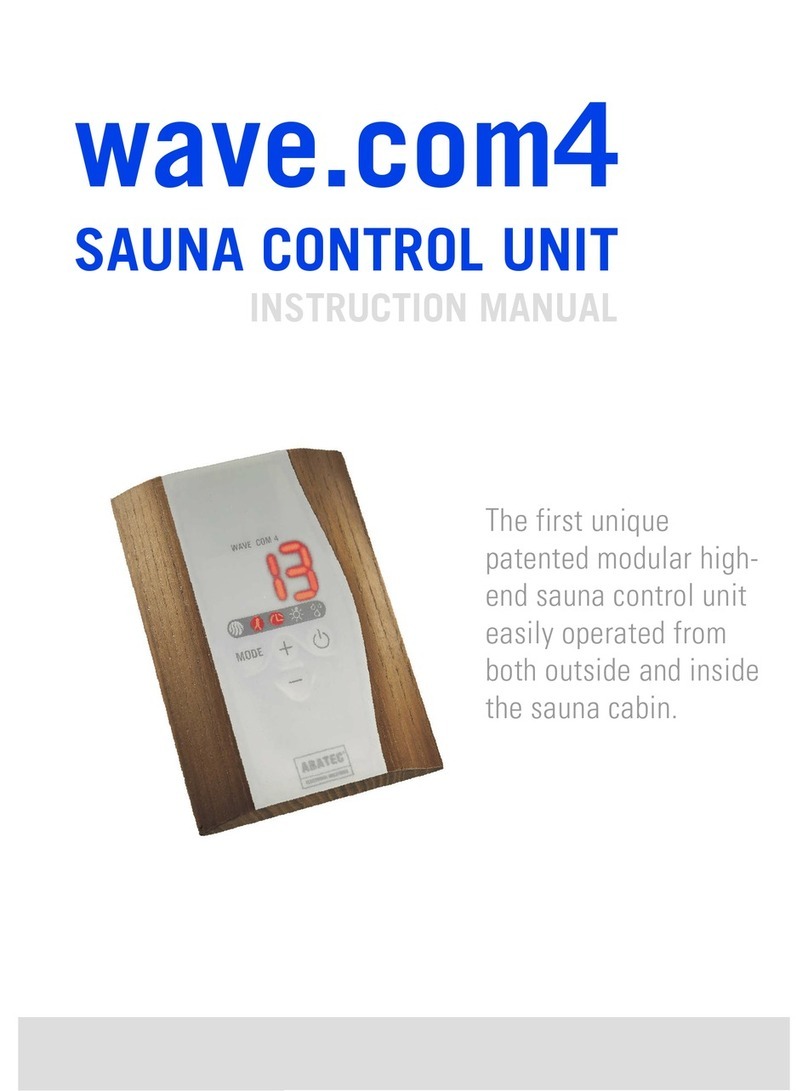
ABATEC
ABATEC WAVE.COM4 instruction manual

Sandpiper
Sandpiper s05 Service & operating manual

NTI
NTI GB-ND 057-DO Replacement instructions
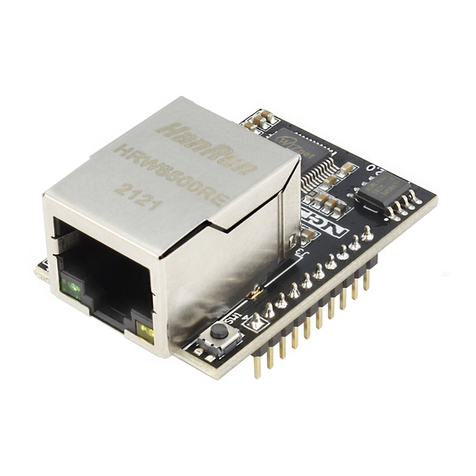
NCD
NCD Gen3 Ethernet Module quick start guide
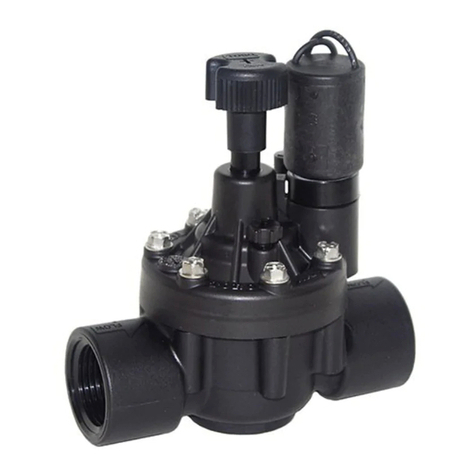
Toro
Toro TPV Series Installation and operation guide
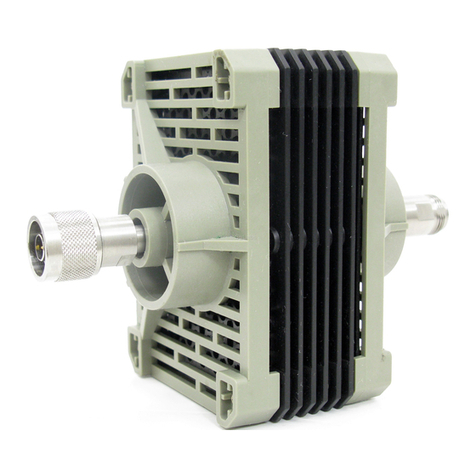
Keysight Technologies
Keysight Technologies 8498A Operating and service manual

